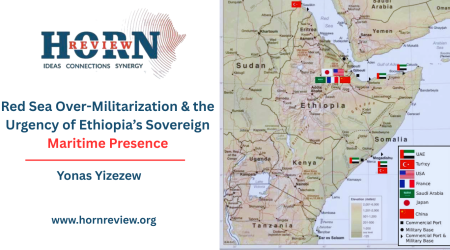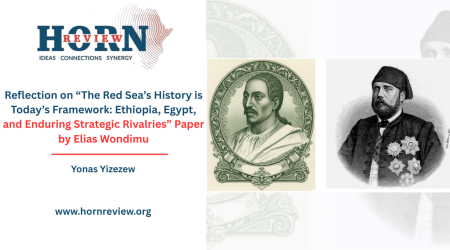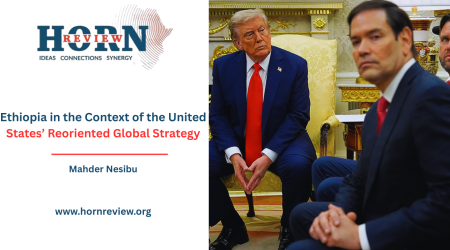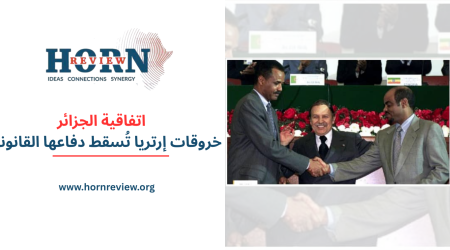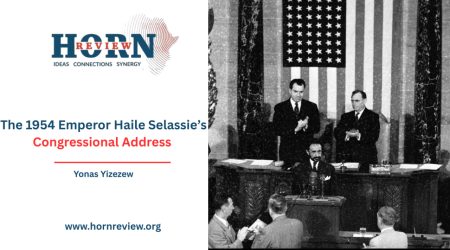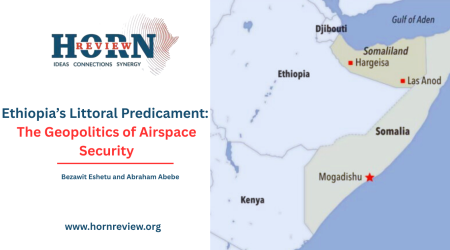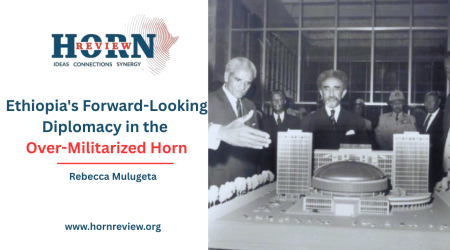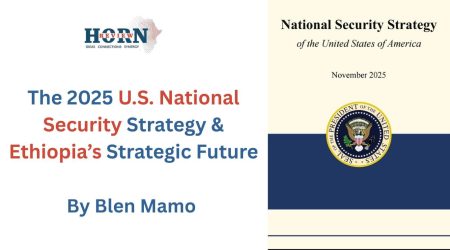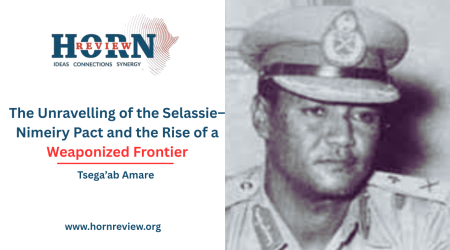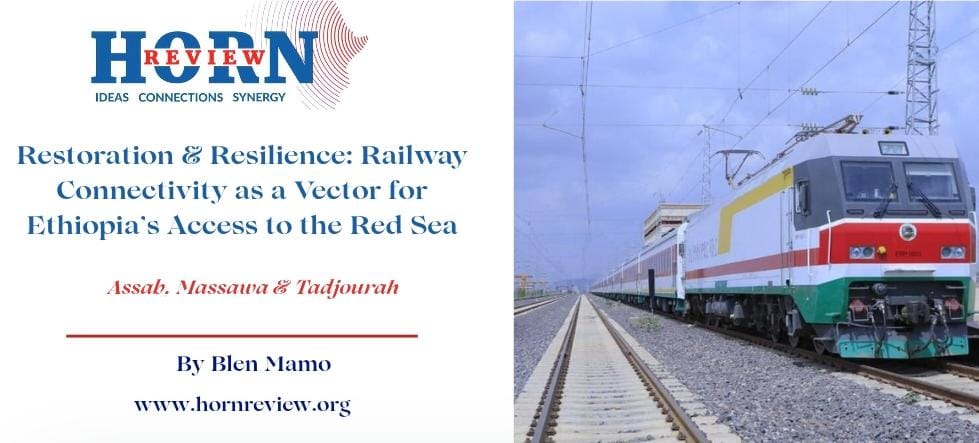
26
Oct
Restoration & Resilience: Railway Connectivity as a Vector for Ethiopia’s Access to the Red Sea
Ethiopia’s pursuit of renewed maritime access via the Red Sea constitutes a strategic endeavor of profound historical resonance and systemic significance, seamlessly intertwining geopolitical ambition, infrastructural sophistication, and regional integration. The dual imperatives guiding this initiative – restoration of historical connectivity and the structural necessity of securing a resilient maritime lifeline – inform both the operational and conceptual architecture of national planning. This duality enables a nuanced approach in which physical infrastructure, diplomatic engagement, and multilateral coordination converge to advance Ethiopia’s objectives, even amid non-convergent regional positions and carefully calibrated deterrent posturing along the northern frontier.
The Weldiya–Mekelle standard-gauge railway, unveiled by the Ethiopian Railway Corporation (ERC) on October 21, 2025, epitomizes this strategic synthesis. Spanning approximately 216 kilometers and linking the northern highlands with the ports of Assab, Massawa, and Djibouti’s Tadjourah, the corridor exemplifies a meticulously orchestrated effort to restore Ethiopia’s operational maritime reach. Beyond mere physical connectivity, the project embodies a layered sophistication encompassing technical design, financial engineering, and regional integration considerations. The ERC’s 21-page report, presented at the National Railway Business and Investment Summit, details construction specifications alongside operational integration plans, including port logistics coordination, customs harmonization, and tariff frameworks, underscoring the recognition that strategic infrastructure must function within both technical and institutional ecosystems.
From a historical perspective, Assab and Massawa are not simply geographic endpoints but vestiges of Ethiopia’s erstwhile coastal access prior to late twentieth-century geopolitical realignments. Public pronouncements by Prime Minister Abiy Ahmed have consistently framed maritime reintegration as both historically anchored and temporally inevitable, articulating a vision wherein the Red Sea corridor constitutes a natural extension of Ethiopia’s sovereign domain. Complementing this narrative of restoration is the structural necessity imperative: the corridor is not solely a symbolic or legacy concern but a critical vector for economic resilience, trade diversification, and long-term logistical sovereignty. Together, these dual frames – restorative and systemic – anchor policy choices in both normative legitimacy and empirically grounded strategic imperatives.
The articulation of the Weldiya–Mekelle line unfolds against a backdrop of complex legacy challenges, yet it is important to underscore that it constitutes a completely separate initiative from the Awash–Kombolcha–Hara Gebeya (AKH) project. The AKH project, whose construction was suspended in 2015 and subsequently subjected to arbitration at the London Court of Arbitration with the Turkish contractor Yapi Merkezi, exemplifies the operational vulnerabilities arising from internal conflicts, regional instability, and infrastructural disruption.
While preliminary rulings have favored the ERC, the arbitration pertaining to AKH remains unresolved, and ongoing claims highlight the necessity of compartmentalizing legacy disputes from new projects. This deliberate separation ensures that investor confidence in the Weldiya–Mekelle corridor is preserved, enabling it to advance along a trajectory fully independent of the unresolved AKH claims, and aligned with both financial feasibility and strategic continuity.
The corridor’s single-track, standard-gauge configuration reflects a calculated convergence of technical precision and geopolitical foresight. Standard-gauge compatibility facilitates prospective integration with broader East African and Pan-African transport networks, including corridors connecting Ethiopia to Djibouti and beyond, while phased deployment allows operational control even within partially contested regional environments. Rehabilitation programs, comprehensive maintenance schedules, and wastewater infrastructure upgrades further embody an anticipatory approach to sustainability, safeguarding operational viability amid political, technical, or logistical contingencies.
Financial structuring represents an equally deliberate dimension of the strategy. With projected capital requirements approaching USD 1.6 billion, Ethiopia has articulated a multifaceted funding model integrating domestic allocations, multilateral engagement, and private-sector participation. By situating the project within a corridor logic spanning multiple port options, the ERC enhances the corridor’s appeal to international financiers while mitigating exposure to single-point geopolitical risk. This diversified approach exemplifies the rigor with which fiscal engineering is subordinated to strategic imperatives, ensuring that resource mobilization advances the overarching national agenda rather than functioning as a reactive contingency.
The regional environment, particularly along the northern maritime periphery, introduces complex contingencies that the corridor’s design anticipates through both structural and coded mechanisms. Eritrea, for instance, maintains a non-convergent position toward Ethiopia’s articulated maritime objectives, expressed through measured public signaling and the preservation of a robust defensive posture. The phased implementation of the corridor, coupled with triangulated port options and engagement with multilateral frameworks – including African Union directives and regional cooperative studies – effectively establishes operational leverage without requiring direct confrontation. By developing tangible, partially irreversible infrastructure, Ethiopia creates de facto influence over maritime access, rendering unilateral obstruction increasingly costly and diplomatically constraining.
Parallel engagement with Djibouti provides a complementary channel for port linkage, exemplified by the 2024 offer of administrative control over Tadjourah Port. While Addis Ababa’s response remains deliberative, the proposal underscores the strategic utility of alternative access nodes in reducing single-state dependency and reinforcing corridor resilience. Similarly, prior technical assessments by the Ethiopian Maritime Affairs Authority in 2018 envisaged modernization measures for Massawa, including port facility upgrades, improved road connectivity, and tariff harmonization, reflecting foresight in aligning infrastructure development with operational objectives. Together, these initiatives create a corridor that is materially viable, diplomatically robust, and strategically credible.
The integration of infrastructure, finance, and regional cooperation functions simultaneously as an instrument for strategic signaling and operational capacity. The existence of a functional railway conveys Ethiopia’s capability to mobilize national resources, execute technically demanding projects, and coordinate transnational logistics, while participation in regional studies and adherence to AU protocols signals a commitment to systemic stability and cooperative frameworks. This dual signal – capacity and legitimacy – enhances Ethiopia’s negotiating position, creating the conditions for phased realization of maritime objectives within a complex regional environment.
From a risk management perspective, the Weldiya–Mekelle corridor exemplifies systematic anticipation and mitigation. Financial exposure is attenuated through diversified funding and structured investor engagement; operational risks are addressed via phased construction, standardization, and rigorous maintenance; geopolitical uncertainties are managed through triangulated access strategies, coded engagement with non-convergent neighbors, and alignment with multilateral mechanisms. By embedding these contingency measures, Ethiopia enhances corridor resilience and secures strategic optionality in responding to evolving regional dynamics.
The project’s conceptual sophistication lies in its capacity to synthesize normative, operational, and systemic dimensions into a coherent strategic framework. The historical-restoration frame provides domestic and regional legitimacy, invoking a narrative continuity that resonates with policymakers and institutional actors. The structural-necessity frame reinforces this legitimacy through economic rationality, trade security, and regional interdependence, ensuring that strategic decisions are defensible not only on historical grounds but also on empirically grounded operational metrics. This synthesis elevates the corridor from a linear transport project to a multifaceted instrument of national strategy, advancing maritime access objectives while embedding resilience, credibility, and adaptability within its design.
More broadly, the Weldiya–Mekelle initiative exemplifies a paradigm in which infrastructure functions as both instrument and anchor of strategic policy. It operationalizes Ethiopia’s maritime ambitions, generates tangible leverage within the regional environment, and establishes a platform for sustained engagement with international partners. By constructing corridors that are technically rigorous, financially viable, and diplomatically calibrated, Ethiopia positions itself as a proactive architect of regional connectivity, rather than a reactive participant constrained by historical disputes or adversarial signaling.
The corridor’s design and implementation further illuminate the interplay between physical connectivity and strategic signaling. Infrastructure is deployed not merely to facilitate the movement of goods but to communicate capability, commitment, and foresight. A functioning railway, integrated with port modernization initiatives and logistics frameworks, demonstrates to regional actors and international financiers alike Ethiopia’s operational capacity and institutional coherence. These signals, combined with calibrated engagement strategies, reinforce resilience and credibility without provoking direct confrontation.
In conclusion, the Weldiya–Mekelle railway embodies a sophisticated, multidimensional approach to Ethiopia’s maritime strategy, integrating historical legitimacy with structural necessity, infrastructural rigor with fiscal sophistication, and regional integration with strategic signaling. By embedding contingency management, diversified port linkage, and multilateral alignment within the corridor’s operational architecture, Ethiopia has created a tangible pathway to renewed Red Sea access, resilient to legacy disputes, calibrated regional responses, and evolving operational contingencies.
The initiative illustrates infrastructure-led strategic projection, wherein investments in transport and logistics serve simultaneously as instruments of statecraft, mechanisms for regional integration, and vehicles for asserting durable national interests. By harmonizing historical, systemic, and operational logics, Ethiopia positions itself to achieve maritime connectivity in a manner that is both intellectually coherent and pragmatically actionable, advancing national development, trade security, and regional influence within a complex and dynamic geopolitical landscape.
By Blen Mamo, Executive Director , Horn Review

